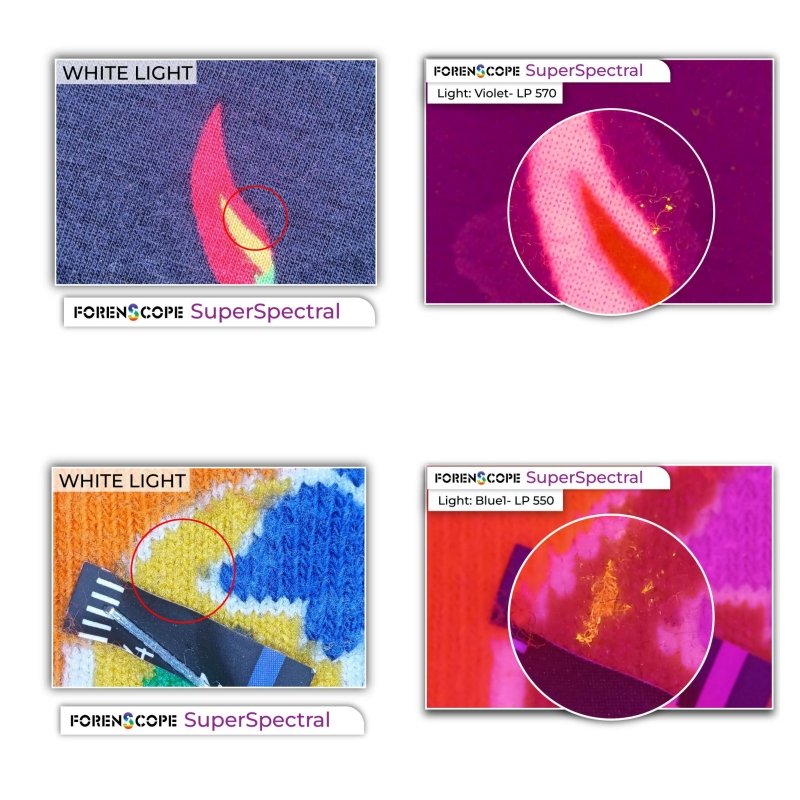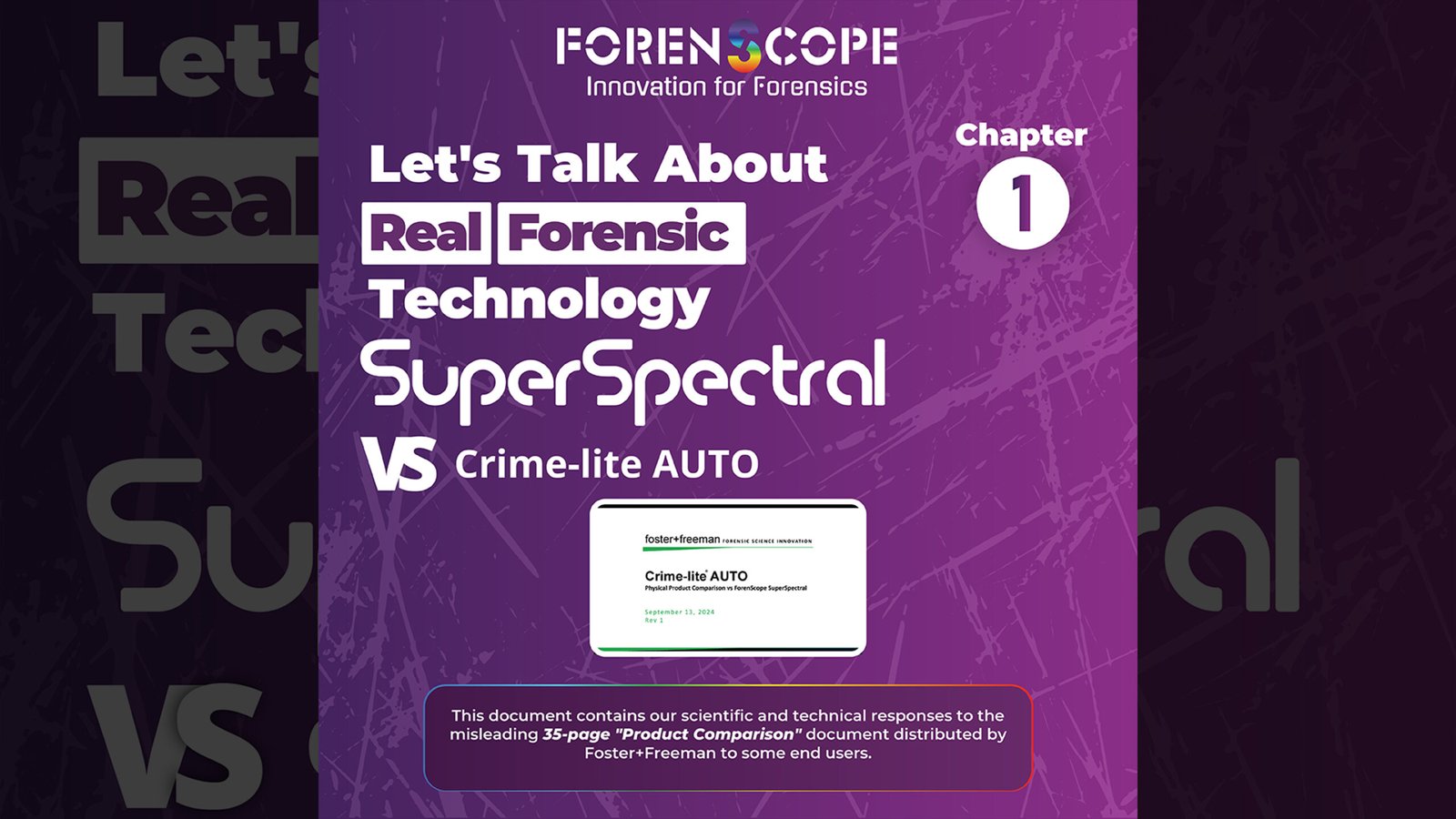*All the asterisks in this document are from the Foster + Freeman official documents
This document contains our scientific and technical responses to the misleading 35-page “Product Comparison” document distributed by Foster+Freeman to some end users.
f+f: Experts and professionals understand the value of high-quality, precision equipment.*
We absolutely agree.
This is why we grow rapidly every year. Because when experts and professionals see SuperSpectral, 8K, t-ZOOM+ DNA, and our other devices;
THEY EASILY UNDERSTAND WHICH IS THE MOST ADVANCED AND THE BEST DEVICE!
–
Evidence Detection: Our Unique Technology Explained: When it comes to detecting the faintest traces of evidence, accuracy of illumination and filtering is critical for detecting weak fluorescence. *
-SuperSpectral is equipped with 12 narrow band LED groups that can emit from 5 different positions: Top, Oblique, and Spot. These LEDs provide illumination in 12 different wavelengths, tailored for various types of evidence.
+f+f is equipped with 9 separate LED groups, capable of emitting from 3 different positions: Center, Right, and Left Wings. These LEDs provide illumination in 9 different wavelengths.*
-ForenScope has 16.7 million different LED combinations.
+f+f has 55 LED combinations.*
-SuperSpectral‘s LED groups consist of a maximum of 20 LEDs. As a result, it delivers high intensity light without needing external lighting or an additional user.
+f+f LED groups consist of a maximum of 6 LEDs, and when higher lighting is needed, an external light source and a second user are required.*
-SuperSpectral is equipped with a Full Automatic Emission Barrier Filter Wheel, offering precise filtering in 12 Bands (Narrow Band Pass, Band Pass, Long Pass, etc.).
+f+f has 9 emission/barrier filters.*
For many reasons like this, SuperSpectral allows users to detect more evidence from greater distances.
ForenScope has been stating for years that Narrow Band illumination, triggering the maximum excitation by different LED groups, is much more accurate for forensic applications. This is why we equip our devices with multiple LED groups that emit Narrow Band light.
–

Crime-lite AUTO LEDs are fitted behind a WaveTrim® filter technology to fine tune the illumination waveband.*
What they refer to as Wave Trim* filter technology is:
Excitation Filter. The purpose of these filters is to narrow the bandwidth of the light coming from the excitation source, allowing only specific wavelengths of light to pass through.
Previously, Excitation Filter Wheels like these were integrated into devices like Video Spectral Comparators (VSC) or ALSs using Xenon lamps to adjust the wavelength range of light coming from a single source. These filters are still used in some devices, including Fluorescence Microscopes. Manufacturers use them to narrow the spectrum of broad-band light or as protective barriers in front of LEDs.
–
ForenScope devices do not require Excitation filters to narrow the band and consider them unnecessary for use in crime scene investigations.
This is because ForenScope devices use fully customized Narrow Band LEDs with a peak value of ±3nm where needed!
Furthermore, the evidence being sought (e.g., body fluid) is not an element but a COMPOUND (complex biological mixture), and these compounds are excited by wavelengths greater than a single nanometer.
For example, stating that semen is only excited when 452nm light is applied is extremely inaccurate and absurd.
On the contrary, Excitation Filters with a single nanometer peak value cannot provide adequate excitation without strong lighting, which prevents the evidence from being visible.
Could one of the reasons our competitors capture less evidence be the prevalence of these misleading misconceptions?
–
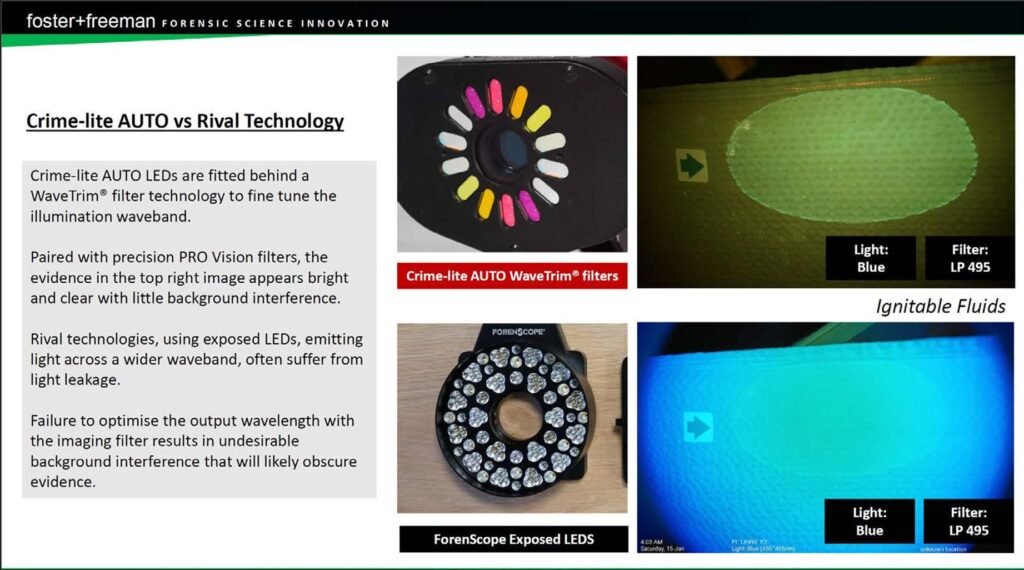
Paired with precision PRO Vision filters, the evidence in the top right image appears bright and clear with little background interference.*
What they refer to as PRO VISION viewing filters are:
Emission Filters – also known as Barrier Filters. These perform the same function as the yellow-orange and red glasses we use with Forensic ALS. However, instead of being worn on the eyes, they are placed in front of the camera. When used correctly, depending on the camera, lighting, and background of the area being examined, they significantly increase the likelihood of finding evidence.
Having multiple and CORRECT Emission Filter options will substantially affect the ability to detect evidence by increasing the accuracy of evidence detection.
–
In SuperSpectral, 12 CUSTOMIZED Emission Filters are used, including Narrow Band Pass, Band Pass, Long Pass, etc.

f+f: In Crime-lite AUTO, 9 Emission Filters are used.*
Many of our competitors are observing our devices and choosing the filters or light filter combinations they will use, calling this innovation.
–
The f+f team intentionally used incorrect lighting and filters with the SuperSpectral V.1 device to produce poor-quality images and attempted to mislead end users.
The following image was made by the ForenScope team using SuperSpectral with the correct lighting and filters. The correct lighting and filter combinations are already integrated within the Smart Button, and the device can automatically apply the correct combinations of light and filters.
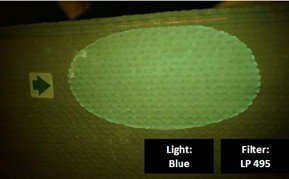
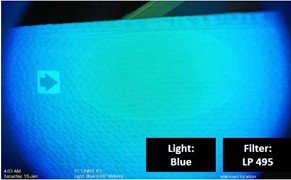


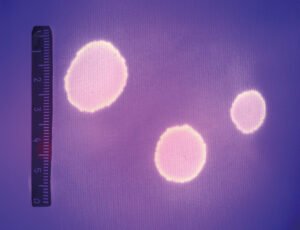
–
f+f Claim: Rival technologies, using exposed LEDs, emittinglight across a wider waveband, often suffer from light leakage.*
This is completely FALSE and MISLEADING information.
Each LED emits light within a Minimum (Min.), Typical (Typ.), and Maximum (Max.) wavelength range, and this has nothing to do with the claim that “nothing is placed in front of the exposed LEDs*.”
When Narrow Band LEDs are used, ensuring they operate at the correct Peak Wavelengths is not achieved by just using Excitation filters.
Claiming this is far from scientific.
At the end of this document, we will provide more information about SuperSpectral and will address the issue of “nothing being placed in front of the exposed LEDs*” as mentioned. We haven’t missed this!
–
The Narrow Band LEDs used by ForenScope have a ±3nm peak value.
And they NEVER emit light across a broad wavelength range.
‘’They emit Narrow Band light’’, and the claim of “Light Leakage” is absolutely absurd!
–
To ensure that the customized Narrow Band LEDs used in our devices operate at the correct Peak Wavelength:
We use batteries that we have developed and manufactured ourselves, allowing us to continuously control the energy supplied to the LEDs.
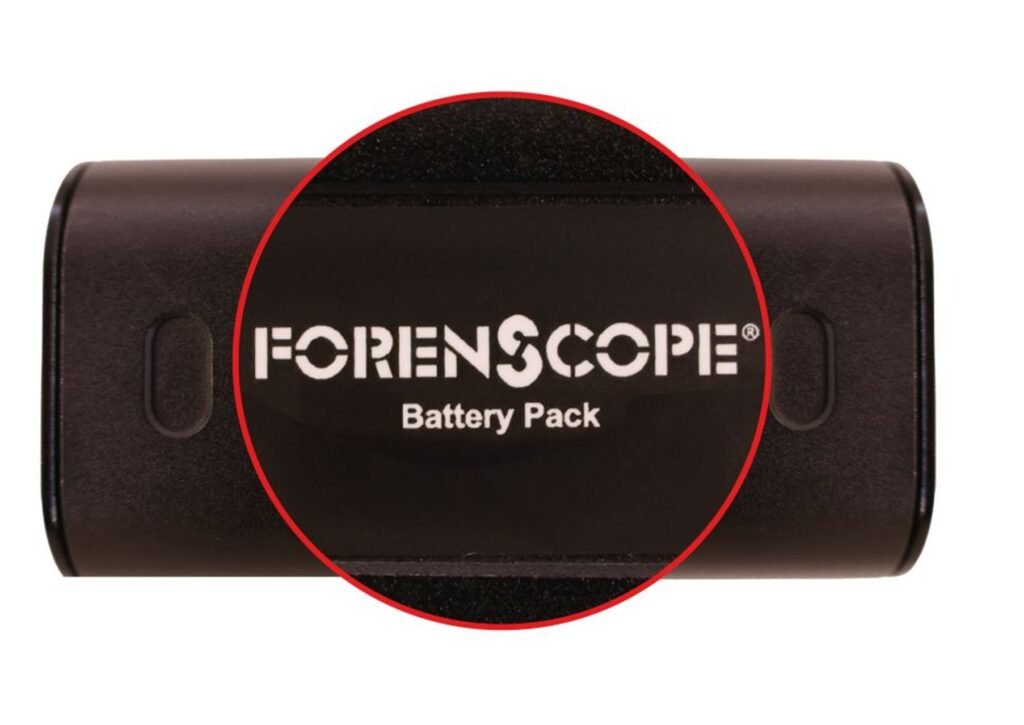
–
We use PCBs, heatsink systems, and full aluminum parts that we have developed and manufactured ourselves, ensuring that the LEDs provide strong illumination while maintaining them within the correct operating temperature range AT ALL TIMES.
If f+f claims otherwise, they should test our B1 LEDs, which are essential for use in evidence such as Oil, Body Fluids, etc., and which they have mistakenly forgotten to use.
It appears that they have already purchased our device and opened it for inspection. Too bad they didn’t do it correctly. Furthermore, if f+f claims that our Narrow Band LEDs emit broad-band light, we recommend that the R&D teams who claim to innovate reconsider their understanding.
–
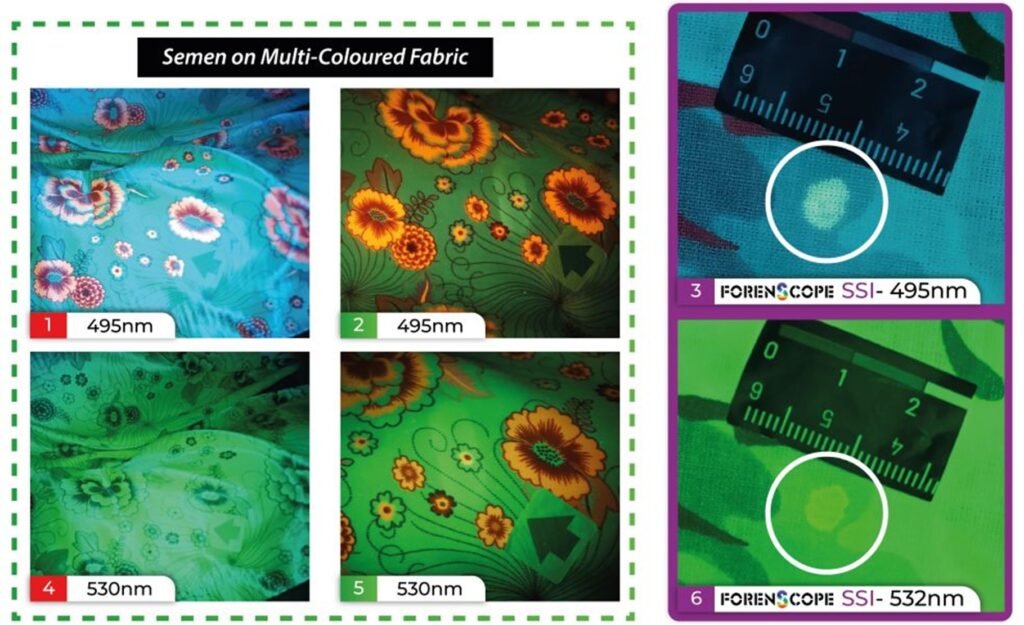
2-5: These are the best images taken by the f+f team using CL-AUTO.
1-4: These are incorrect and flawed shots made by the f+f team using SuperSpectral V1 with wrong filter and light combinations. Thus, manipulation is done, and end users are misinformed.
3-6: These are the correct and expected images made by the ForenScope team using the SuperSpectral Imaging System (SSI) with the right light and filter combinations.
If they had used the B1** (Narrow Band Blue LED) light, specifically customized for body fluid, they could have obtained this image. If this is not ignorance, then it is ill-intended.
Additionally, it would be great if they shared the absurd claim of “Light Leakage” with unaltered videos, proving that it works correctly so we all can see!
–
*At ForenScope, we develop these technologies with millions of USD on R&D, and we protect our innovations to prevent duplication. Therefore, we never disclose the details of our customized Narrow Band LEDs or filter band ranges in our user manuals or brochures under any circumstances.
However, for devices used in evidence examinations for court purposes, the accuracy of light and filter values is critically important. Therefore, the light and filter values used in SuperSpectral shots are disclosed with FULL ACCURACY in a way that prevents replication.
- This information and values are recorded in the metadata of the photos taken. If needed, they can also be automatically printed onto the photos for reporting purposes.

ADDITIONALLY, SuperSpectral has been a pioneer in the field since its first release by recording RAW photos.
RAW photos guarantee that the images have not been altered and serve as fully reliable evidence for all courts worldwide.

f+f Claims: Failure to optimise the output wavelength with the imaging filter results in undesirable background interference that will likely obscure evidence.*
This is incomplete information.
- When attempting to eliminate background noise, if the correct Emission filter you’ve chosen remains unchanged, you need to increase the light intensity.
- Even with the correct filter selected, if your light intensity is insufficient, evidence may be hidden.
–
You must either have high light intensity like SuperSpectral or increase your chances of using the correct filter with SuperSpectral’s wide selection of Emission/Barrier filters. Because factors such as the proportion of evidence, the background color, and the absorption height of the examined evidence increase the likelihood of missing evidence with just one filter.
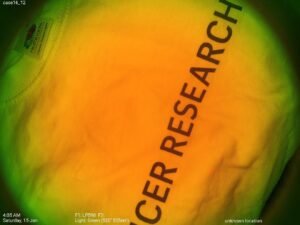
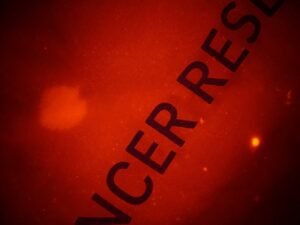
–
Experts conducting crime scene investigations with ALS must also wear the correct glasses according to the type of evidence being searched and the background color of the scene. For example, when searching for bodily fluids, if the background is dark, it is crucial to use yellow glasses; if the background is light, orange glasses should be used.
This difference will change depending on whether the background is yellow, red, or orange. For this reason, SuperSpectral has developed different Smart Buttons for background color searches in these cases. SuperSpectral offers 12 unique filters, similar to having 12 different glasses for various purposes, all integrated into a handheld terminal under 1.5 kilograms.
